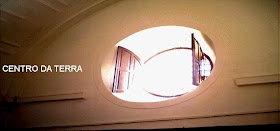Workshop Conoscere la terra cruda
Itinerario alla scoperta dell’uso della terra in Sardegna
SERRENTI 21-29.09.2013
L'Associazione
Nazionale Città della Terra Cruda in collaborazione con il DICAAR (Dipartimento
di Ingegneria Civile, Ambientale e Architettura di Cagliari), il Laboratorio
Arti della Terra di Serrenti, la rete dei comuni del progetto CIVIS (Serrenti,
Serramanna, Samassi, San Gavino Monreale, Pabillonis, Gonnosfanadiga e Arbus)
promuove dal 21 al 29 settembre 2013 il workshop "Conoscere la terra
cruda - Itinerario alla scoperta dell'uso della terra in Sardegna". La
proposta è rivolta innanzitutto agli studenti di architettura e ingegneria, ai
progettisti e a tutti gli appassionati della terra cruda, secondo un'offerta di
ospitalità turistica presso l'itinerario turistico culturale "Le Città
della Terra". I partecipanti avranno la possibilità di cimentarsi oltrechè
con la terra cruda, con il pane, con la terra cotta, e poter visitare il
patrimonio architettonico tradizionale in terra cruda, i beni culturali e
paesaggistici, e conoscere il patrimonio eno-gastronomico del Campidano.
Programma
Sabato
21 settembre
SERRENTI
| Laboratorio Arti della Terra | presentazione workshop
PABILLONIS
| visita alla casa Museo | laboratorio con la terra cotta
Domenica
22 settembre
SERRAMANNA
| visita al centro storico alle sue case in terra cruda
SAMASSI
| Degustazione prodotti tipici locali | visita alle case in terra cruda
Lunedì
23 settembre | Laboratorio Arti della Terra di Serrenti
Ore
8:30 – 13:30 laboratorio | introduzione: terra materiale da costruzione
Pranzo
Ore
15:30 – 17:30 laboratorio | terra, acqua, grani – la materia trifasica – il
test Carazas
Martedì
24 settembre | Laboratorio Arti della Terra di Serrenti
Ore
8:30 – 13:30 laboratorio | tecniche costruttive – l’adobe
Pranzo
Ore
15:30 – 17:30 laboratorio | adobe - produzione
Mercoledì
25 settembre
GONNOSFANADIGA
| laboratorio del pane | degustazione prodotti tipici locali
ARBUS
| visita la Museo del coltello | visita alla spiaggia di Piscinas
Giovedì
26 settembre | Laboratorio Arti della Terra di Serrenti
Ore
8:30 – 13:30 laboratorio | tecnica del pisè
Pranzo
Ore
15:30 – 17:30 laboratorio | tecnica del pisè
Venerdì
27 settembre | Laboratorio Arti della Terra di Serrenti
Ore 8:30 – 13:30 laboratorio |
muratura in adobe
Pranzo
Ore
15:30 – 17:30 laboratorio | graticcio - torchis
Sabato
28 settembre | Laboratorio Arti della Terra di Serrenti
Ore
8:30 – 13:30 laboratorio | costruzione d’archi
Pranzo
Ore
15:30 – 17:30 laboratorio | costruzione di cupole
Domenica
29 settembre
Ore
8:30 – 13:30 laboratorio | intonaci e finiture
Pranzo
SAN
GAVINO MONREALE | visita edifici in terra cruda | cena con prodotti tipici
locali
Docenti:
arch. Maddalena Achenza, PhD
arch. Wilfredo Carazas Aedo
Costo
d’iscrizione € 350,00 studenti - € 450,00 altri
Il
costo d’iscrizione comprende: iscrizione al corso, assicurazione infortuni,
pernottamento in camera doppia, pranzi e visite guidate.
Le
iscrizioni devono pervenire entro il 15 settembre 2013
Partecipanti:
minimo 15 fino ad un massimo di 20.
Modalità
d’iscrizione con bonifico bancario intestato a:
Associazione
Nazionale Città della Terra Cruda
IBAN | IT 72 S 07061 04800
000040128654
Causale: workshop progetto
CIVIS
Per
informazioni:
Associazione
Nazionale Città della Terra Cruda
+39.070.9382084 -
+39.328.8384201
Arch. Maddalena Achenza
+39.329.6271365




























![Terra [In]cognita project: Earthen architecture in Europe](http://1.bp.blogspot.com/-36uMVOoZMLE/TazQAiZE1KI/AAAAAAAAByA/NCxO8IKqLTg/s285/logoterraincognita.jpg)
